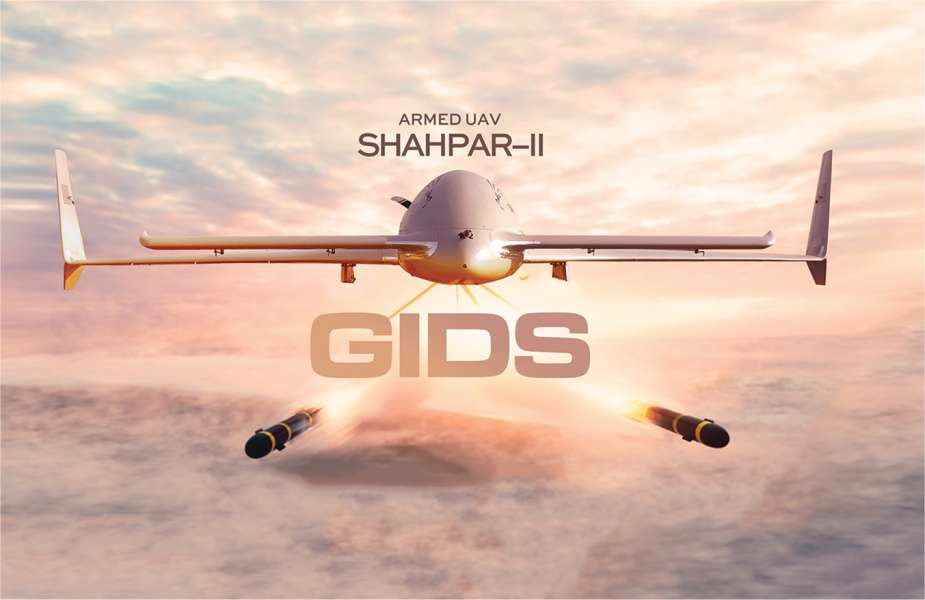Breaking news
Pakistan unveils new Shahpar II unmanned combat aerial vehicle.
Pakistan's state-owned defense consortium, Global Industrial & Defence Solutions (GIDS), recently caught the international spotlight by unveiling the Shahpar II, its latest Unmanned Combat Aerial Vehicle (UCAV). During a compelling demonstration in Bahawalpur, Pakistan, this Medium-Altitude Long-Endurance (MALE) drone proved its capability to hit targets with high precision using its "Burq" air-to-ground guided missile, observed by senior military representatives from eleven allied countries.
Follow Army Recognition on Google News at this link

Pakistan GIDS Shahpar II Unmanned Combat Aerial Vehicle (Picture source: GIDS)
GIDS positions the Shahpar II as a direct competitor to well-established UCAVs on the market, including Turkey's Bayraktar TB2 and China's CH-4, touting its superiority in terms of performance and cost-effectiveness. This claim raises questions about the specifics of this superiority. A technical comparison between the Shahpar II and its rivals reveals several aspects to consider.
The Shahpar II, measuring 8 meters in length and having a wingspan of 9.45 meters, accommodates internal payloads up to 53 kilograms and external payloads reaching 190 kilograms. It achieves a maximum speed of 120 knots (approximately 200 km/h), and notably, it boasts a service ceiling of 23,000 feet (7,010 meters) for surveillance tasks and 21,000 feet (6,400 meters) when equipped for combat. These capabilities render the Shahpar II a highly versatile tool across various operational scenarios.
The drone's maximum flight endurance is listed at 14 hours, which is shorter than the Bayraktar TB2's 27 hours and considerably less than the CH-4's potential 30 to 40 hours. Nonetheless, its capacity to engage targets up to 1000 kilometers away is commendable, though the CH-4 can extend this reach with versions capable of surpassing 1500 kilometers.
In altitude performance, the Shahpar II operates effectively at a service ceiling adjusted to 23,000 feet for surveillance and 21,000 feet when armed, which is competitive with its peers, offering enhanced mission flexibility.
Despite the Shahpar II not featuring the highest flight endurance compared to the Bayraktar TB2 and the CH-4, its arsenal and targeting features are robust, with future enhancements such as the Barq-2 missile and a laser-guided bomb on the horizon, indicating its continuous improvement trajectory.
Perhaps the Shahpar II's major strength lies in its sensor suite, notably the EO/IR Zumr-II sensor, promising advanced reconnaissance and targeting capabilities. Without direct analysis, it remains difficult to precisely measure its technological edge over the TB2 and CH-4, but the investment in such technology indicates GIDS's ambitious direction.
Ultimately, although the Shahpar II may exhibit certain limitations in direct comparison with the Bayraktar TB2 and the CH-4, its potential for development, precision capabilities, and cost-performance efficiency make it a serious contender on the international military drone market. Pakistan's initiative to promote the Shahpar II reflects its aspiration to position itself as an innovative and competitive player in the field of defense technology, underscoring its commitment to continuous improvement and adaptability of its military capabilities in the modern era.























